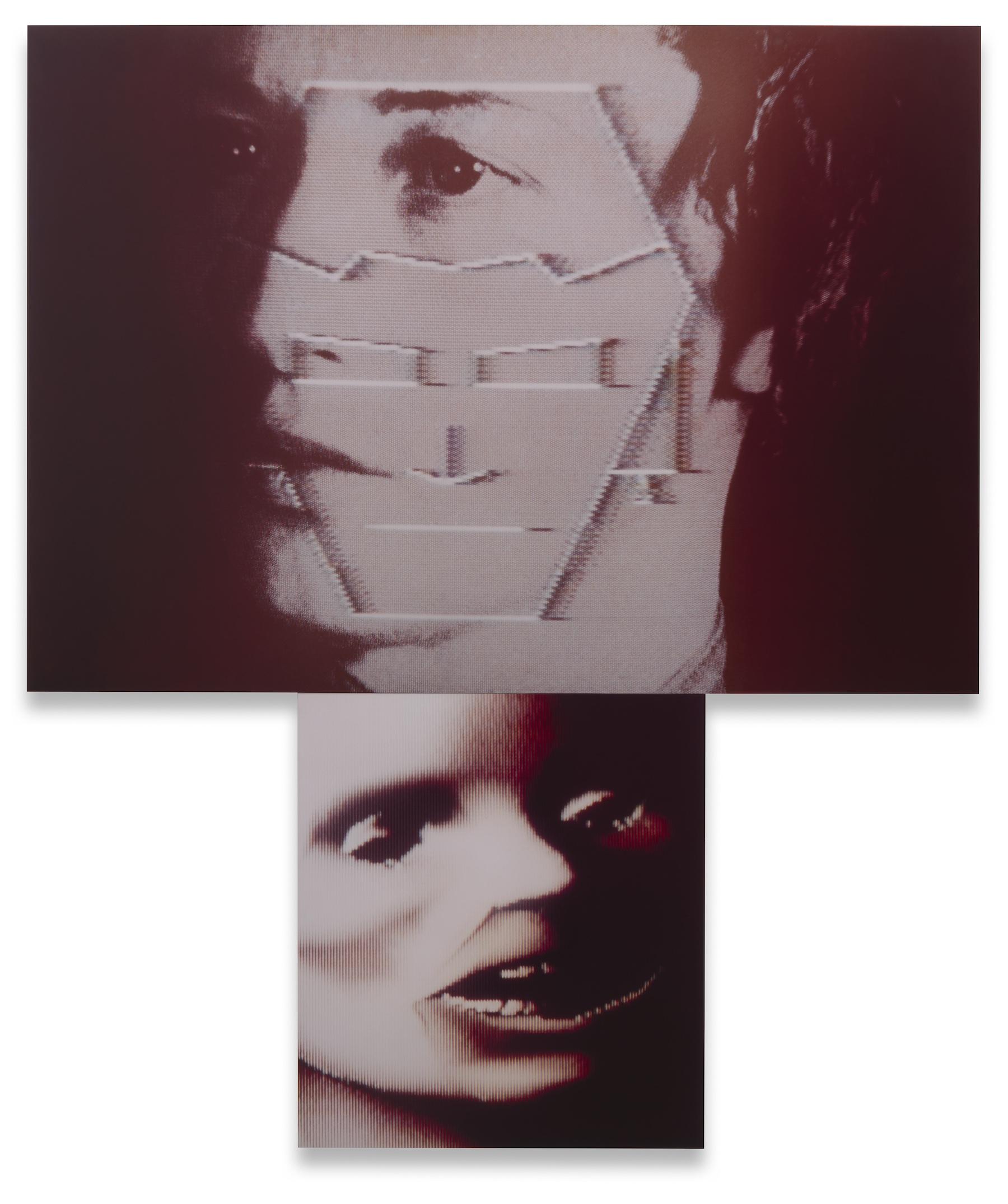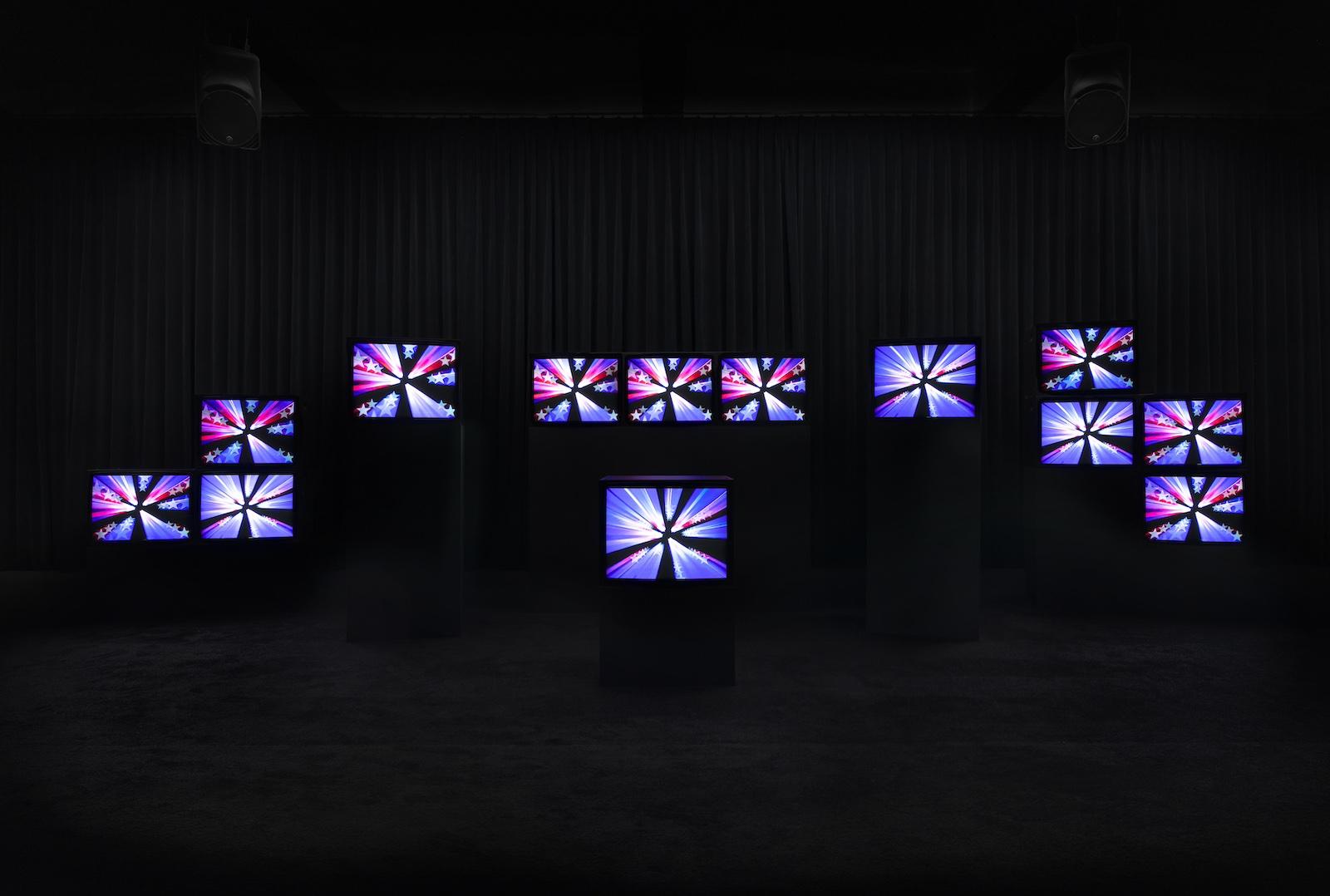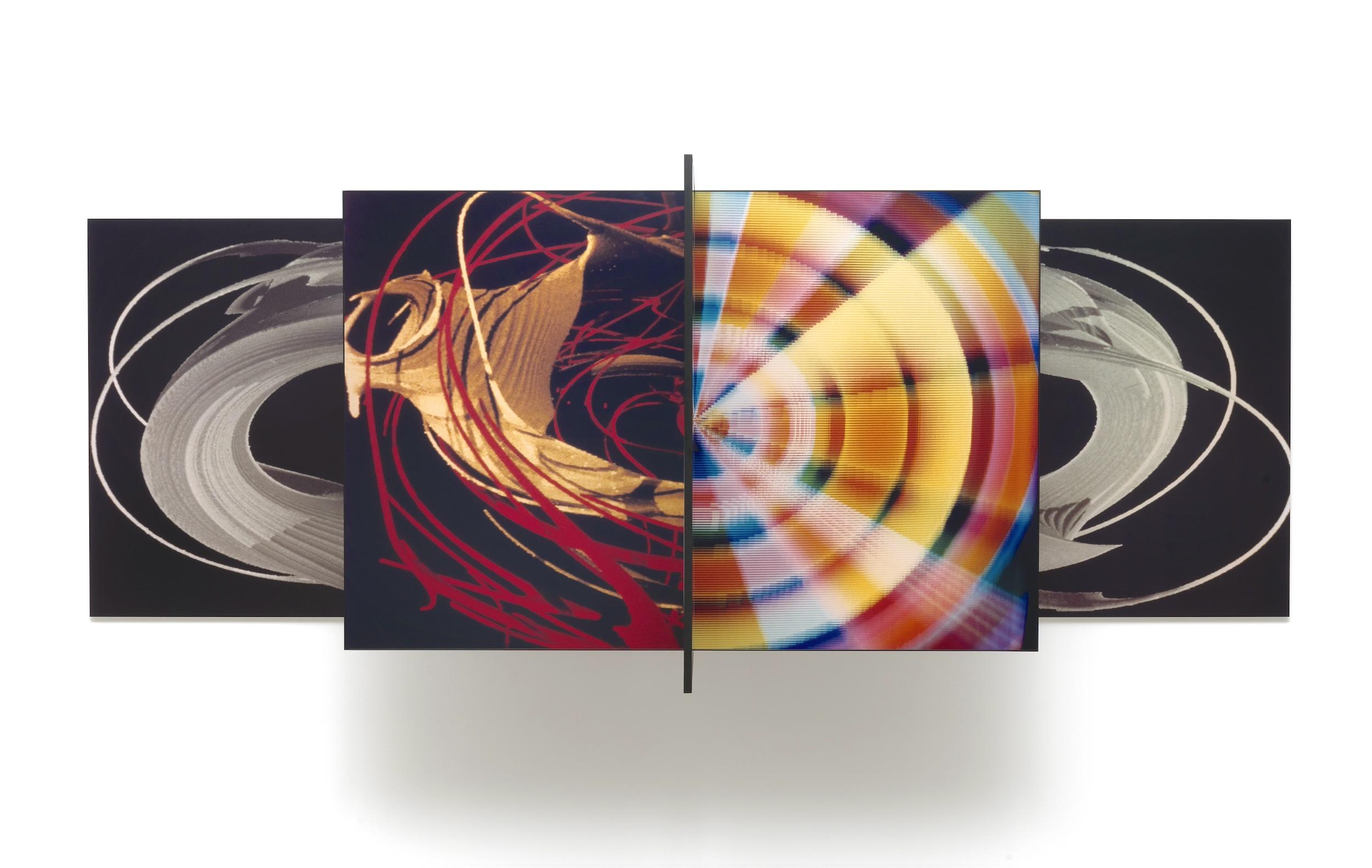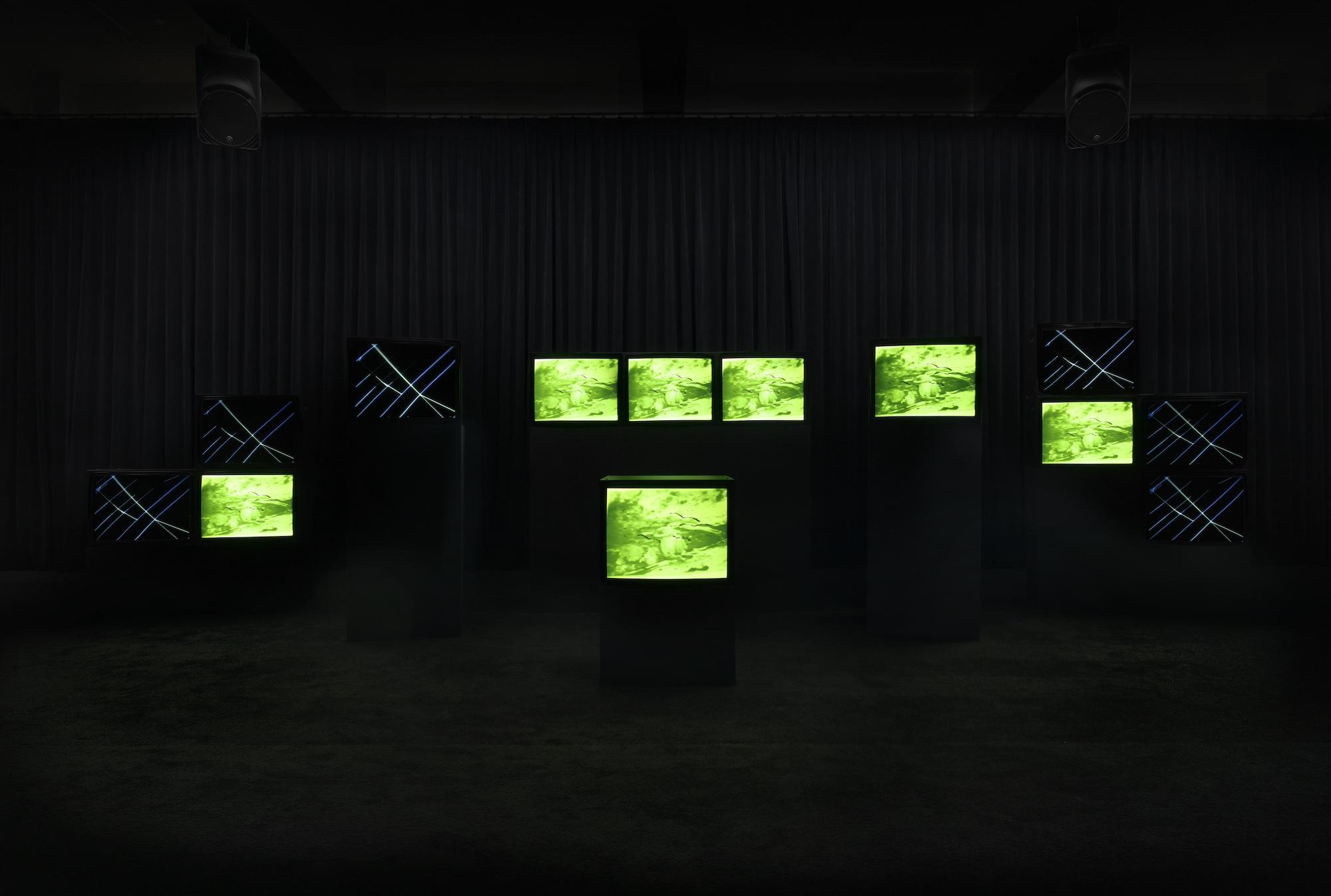Art has often been instrumental in reflecting the conditions of our society back to us, in elucidating the sometimes uglier aspects of what we’ve come to find mundane. Artist and activist Gretchen Bender and her large-scale “electronic theater” installations were seminal in the practice of re-contextualizing media in order to expose it.
The retrospective exhibition, Perversion of the Visual, on view at Sprüth Magers in Los Angeles until August 10th, pays homage to the immersive pastiche of Bender’s making.
After moving to New York in 1978, Bender became involved with the contemporary movement of the “Pictures Generation,” which included Barbara Kruger, Robert Longo, and Cindy Sherman. Originally working with screen printing, Bender soon began using abstracted computer graphics in her work, in addition to stills from network television.

































